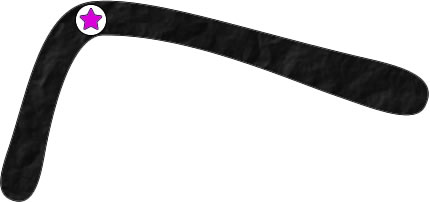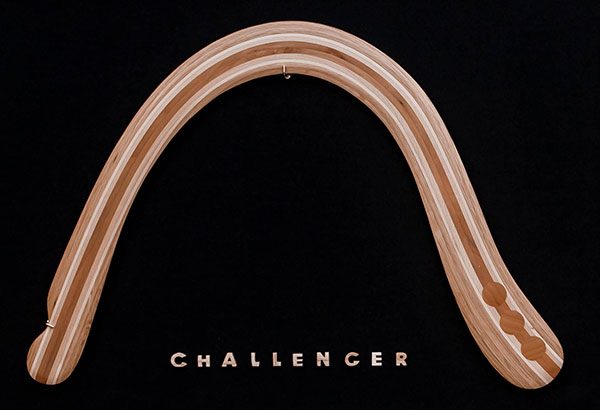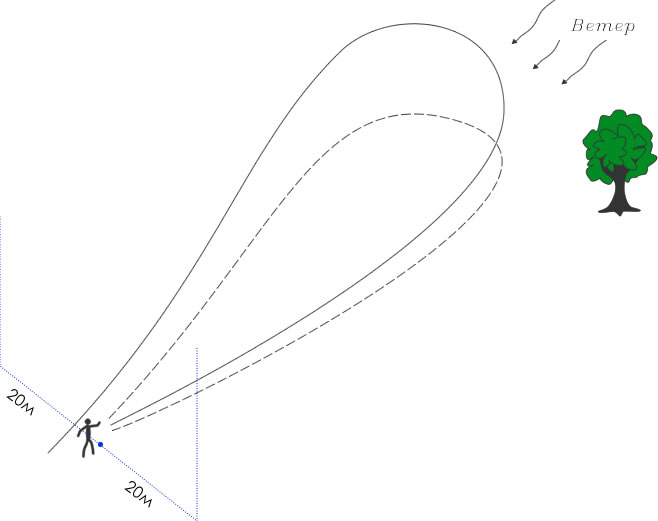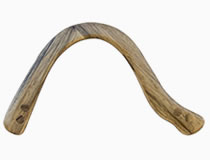Modern sports boomerangs, depending on the shape and configuration of the profile, have very different flight characteristics. Some boomerangs return quickly, others are able to fly for a long time before landing. Still others are able to travel long distances. Each type of boomerang is used in the respective competitive disciplines. For example, at the "Australian Round" competitions, the throw range and return accuracy are evaluated simultaneously. Boomerangs with smooth return are suitable for performing tricks and juggling, as well as for different fishing methods, which is part of the rules of some types of competitions.
Competitive boomerang tournaments can include several disciplines. Here are some of them:
-
MTA (Maximum Time Aloft) - the maximum time spent by the boomerang in the air. The throwing field can be either unlimited or with a radius of 100 meters.
-
LD (Long Distance) - the greatest distance reached by the boomerang.
-
Fast Catch - the time taken to throw and catch a boomerang five times is estimated.
-
The Australian round. The boomerang must overcome at least 50 meters and return. The accuracy, catch and flight range are evaluated. The participant has five attempts.
MTA
A boomerang of this category has the appearance of a hook similar to the letter "L". Wings, as a rule, have a large asymmetry in length and shape. Such boomerangs are light in weight and thickness.

The launch is made by a strong upward throw. After climbing, the boomerang begins a smooth descent along a trajectory resembling a downward spiral. Due to its low weight, the boomerang can stay in the air for a long time. On average, the time can be 20 - 40 seconds. The MTA 100 world record is 139 seconds.

The launch field can be limited to a circle with a radius of 100 meters, i.e. the boomerang must be within this circle. This discipline is called MTA 100. A similar discipline without space limitation is called MTA unlimited. Points are awarded for the time spent by the boomerang in the air.
LD
Long-range boomerangs, as the name implies, compete in the maximum distance traveled. As a rule, a boomerang has two blades, and is made in the form of a smooth hook. The wings can be symmetrical, but boomerangs with a slightly larger leading wing are more common.

Long-range boomerangs, in order to achieve the maximum distance, are weighted with lead weights. The main weight is placed on the leading wing. Additionally, the driven wing and (or) the elbow are equipped with a load.
The profile of the wings generates low lift, and may even have a negative angle of attack. This is done so that the boomerang can fly away as far as possible until the moment when it begins its turn.
The boomerang is launched with the strongest possible throw at an angle of 60-80 degrees to the horizon.

According to the rules of the competition, the boomerang is launched from the center of the 40-meter line. The maximum distance traveled from this line is measured. The boomerang should return to this conditional 40-meter gate of infinite height. There is no need to catch a boomerang.
The trajectory of the distant boomerang has the shape of an elongated ellipse or a drop. The first phase of the flight is characterized by almost straight-line movement with a slow climb. Depending on the setting, the boomerang in this phase may do some diving down. In this case, the launch is made obviously higher.
In the second phase, the boomerang unfolds, reaching its maximum height. The highest point of the trajectory is passed by the boomerang at the moment when it has already started moving in the opposite direction. The trajectory of the return path can describe an S-shaped arc.
The official world record for the throw distance of 238 meters was set by Manuel Schultz in 1999.



